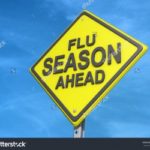Merry & Bright: Five Healthy Holiday Tips
Merry & Bright: Five Healthy Holiday Tips : Excerpt from the Canadian Centre for Occupational Health & Safety (CCOHS) Newsletter
Along with the joys, hustle, and bustle of the holidays can come an increased risk to your health and safety. Here are some tips to help you and your loved ones stay safe and sound as you enjoy the festivities of the holiday season.
1.Drink responsibly
If you will be going to parties or gatherings where alcohol will be served, it’s important to plan ahead and drink responsibly to stay safe and avoid injury to yourself and others. Before heading out, decide who among you will be the designated, non-drinking driver. Don’t drive if you have been drinking and don’t let anyone else drink and drive. Take a taxi, public transportation, or walk where possible.
Limit how much alcohol you drink. A good tip is to alternate alcoholic and non-alcoholic drinks and space your alcoholic drinks at least an hour apart. And remember to have something to eat when drinking alcohol.
2. Maintain your healthy habits
How well you take care of yourself will have a big impact on how you manage emotionally. Aim to get plenty of sleep, take time for yourself and enjoy regular physical activity. If you need help with holiday gatherings, for meal preparation or clean up, reach out to family and friends. With balance and moderation, you can enjoy the holidays in a healthy way.
3. Be fire safe
Fire hazards are plentiful during the holidays: the dry evergreen tree, candles and electric lights you use to decorate or set the holiday mood, or the cozy fire blazing in the fireplace.
Candles and fireplaces
Never leave cooking food or burning candles, fires, or cigarettes unattended. Put candles in non-tipping candle holders and keep them well away from anything that could catch fire, such as curtains or the Christmas tree, and out of reach of children and pets. This advice also applies to space heaters. Always use a secure screen in front of your wood burning fireplace to contain embers and sparks. Install a smoke detector and carbon monoxide detector in your home and test them monthly. Keep a working fire extinguisher handy.
Decorative lights
Use lights and extension cords that are in good condition (no frayed wires, gaps in the insulation, broken or cracked sockets/plugs, excessive kinking or wear). Turn off decorative lights when you leave work and, at home, turn them off when you are asleep or away. Don’t overload electrical outlets.
The tree
Prevent the evergreen tree from drying out and becoming a hazard. Keep the stand filled with water. Turn off the tree lights when you go to bed or leave the house to prevent the lights from shorting out and starting a fire. When setting up a tree at home or at work, place it away from fireplaces, radiators or portable heaters, and be careful not to block doorways.
4.Drive safely
Over the holidays you may find yourself behind the wheel, covering more ground than usual. Bitter cold, snow, slippery roads, and unpredictable weather conditions are just a few elements of a Canadian winter that can make driving conditions risky. If you really must drive when weather conditions are nasty, prepare yourself for any emergency that you may run into. Keep a winter driving emergency kit in your vehicle that contains the following:
-
-
- Shovel, battery booster cables, and sand or traction mats
- Snow brush, extra anti-freezing windshield wiper fluid
- Road flares, reflective vest, flashlight
- Blanket, warm clothing, gloves, and warm footwear
- Matches or lighter, and emergency candles (use only with an opened window to prevent carbon monoxide build-up)
- Snack bars or other emergency food and water
- Insulated bottle of hot beverage
- First aid kit
- A fully charged cell phone
-
5. Shovelling
Shovelling snow can be hard work and whether you shovel at work or at home, there are steps you can take to protect yourself from the hazards of the task: cold exposure; fatigue; muscle strains; back injury and even a heart attack.
-
- Make sure you are physically able to do the job. Shovelling snow involves strenuous effort.
- Warm up with stretching and flexing exercises to loosen up your muscles before you begin shovelling.
- Use a lightweight shovel (about 1.5 kg or a little over 3 lbs), with a blade that isn’t too large, and a handle that is long enough so that you don’t have to stoop to shovel.
- Push the snow rather than lift it. If you must throw it, take only as much snow as you can easily lift and turn your feet to the direction you’re throwing – don’t twist at the waist. Do not throw snow over your shoulder or to the side.
- Take frequent rest breaks and drink some warm non-alcoholic fluids.
We wish you a safe, healthy and happy holiday season.
Resources
- Holiday Safety fact sheet, CCOHS
- Low Risk Drinking Guidelines, CAMH
- Responsible Drinking, Health Canada
- Driving Tips – Winter fact sheet, CCOHS
- Vehicle Survival Kit Fast Facts Card, CCOHS
- Winter Driving, Transport Canada
- Safe Winter Driving, Canadian Automobile Association (CAA)




